Rhinoceros Iguana
- March 6, 2024
- 0 comment
The Rhinoceros iguana, native to the Caribbean islands of Hispaniola and Haiti, is a captivating reptile distinguished by its striking appearance and intriguing behaviors. These majestic creatures inhabit rocky, arid landscapes such as limestone outcrops, coastal scrublands, and dry forests, preferring hot and dry climates where they can often be seen basking in the sun to regulate their body temperature. Rhinoceros iguanas are among the largest species of iguanas, with adults reaching lengths of up to four feet and weighing between 10 to 20 pounds for males and slightly less for females.
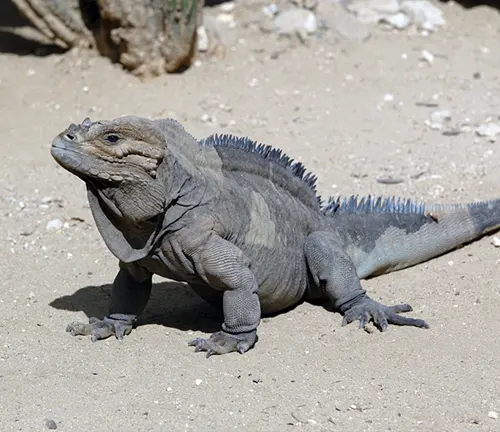
Their robust build and distinctive horn-like structures on their snouts, more pronounced in males, give them a unique resemblance to rhinoceroses, hence their name. These iguanas are primarily solitary but can be found in small groups, especially during the breeding season. They are herbivores, feeding on a diet consisting mainly of leaves, fruits, flowers, and other vegetation, utilizing their specialized teeth for chewing tough plant material. Conservation efforts are crucial for the survival of these vulnerable creatures, as they face threats from habitat loss, predation, and illegal poaching. Through awareness, protection of their natural habitats, and responsible tourism, we can ensure the preservation of the Rhinoceros iguana for generations to come.
| Specification | Description |
|---|---|
| Scientific Name | Cyclura cornuta |
| Common Name | Rhinoceros iguana |
| Habitat | Rocky, arid areas such as limestone outcrops, coastal scrublands, and dry forests |
| Distribution | Caribbean islands of Hispaniola and Haiti |
| Size | Up to four feet in length |
| Weight | Males: 10 to 20 pounds; Females: 5 to 15 pounds |
| Appearance | Robust build with distinctive horn-like structures on snout |
| Diet | Herbivorous, feeding on leaves, fruits, flowers, and vegetation |
| Social Behavior | Primarily solitary, occasional small groups, territorial |
| Conservation Status | Vulnerable (IUCN Red List) due to habitat loss, predation, and illegal poaching |
| Lifespan | Up to 20 years in captivity |
Majestic Creatures of the Caribbean
Rhinoceros iguanas are fascinating reptiles native to the Caribbean islands, known for their distinctive appearance and intriguing behaviors. In this article, we’ll delve into the world of rhinoceros iguanas, exploring their habitat, physical characteristics, behavior, conservation status, and their interaction with humans.
Habitat and Distribution


The habitat and distribution of Rhinoceros iguanas are primarily centered around the Caribbean islands of Hispaniola and Haiti. These reptiles inhabit various types of environments within their range, including rocky, arid areas such as limestone outcrops, coastal scrublands, and dry forests. They are well-adapted to hot and dry climates, often seen basking in the sun to regulate their body temperature. Rhinoceros iguanas prefer habitats with ample opportunities for basking, hiding, and foraging, utilizing natural features such as rocks and vegetation for shelter and protection. Their distribution on these islands is influenced by factors such as the availability of suitable habitat, food sources, and the presence of predators. While they are primarily found in natural habitats, Rhinoceros iguanas may also inhabit disturbed areas and human-modified landscapes to some extent. However, habitat loss and fragmentation due to human activities pose significant threats to their survival, highlighting the importance of conservation efforts to protect their natural habitats and ensure their long-term viability.
Physical Characteristics
Size and Weight
Rhinoceros iguanas are among the largest species of iguanas, with adults reaching impressive lengths of up to four feet. Males tend to be larger and heavier than females. On average, adult males can weigh between 10 to 20 pounds, while females are slightly smaller, weighing between 5 to 15 pounds. This size and weight give them a robust appearance, making them one of the most striking reptiles in their habitat.
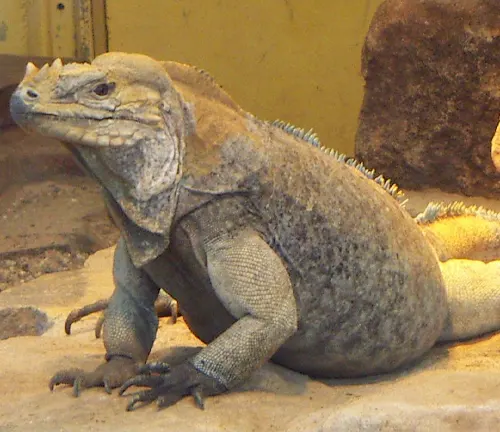
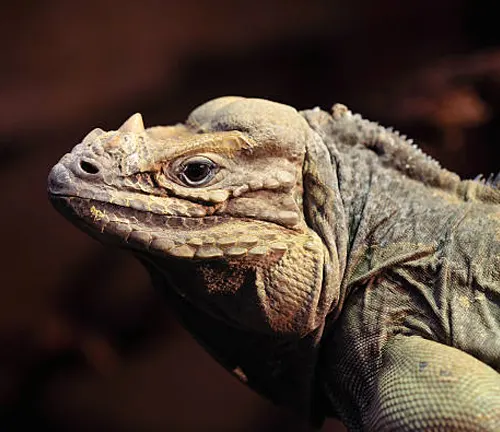
Unique Features
One of the most distinctive features of rhinoceros iguanas is the prominent horn-like structures on their snouts, which resemble those of rhinoceroses, hence their name. These horns are more pronounced in males and are used during territorial disputes and mating displays. Their thick, rough skin is covered in scales, providing protection from predators and environmental elements.
Behavior and Diet
Social Behavior
Rhinoceros iguanas exhibit primarily solitary behavior, although they may occasionally be found in small groups, especially during the breeding season. They are territorial animals, marking their territories with scent glands and engaging in dominance displays to establish hierarchy within their population. These displays may include head bobbing, push-ups, and showcasing their horns. While they prefer solitary lifestyles, Rhinoceros iguanas may interact with others of their kind when necessary, such as during mating rituals or when defending their territory.
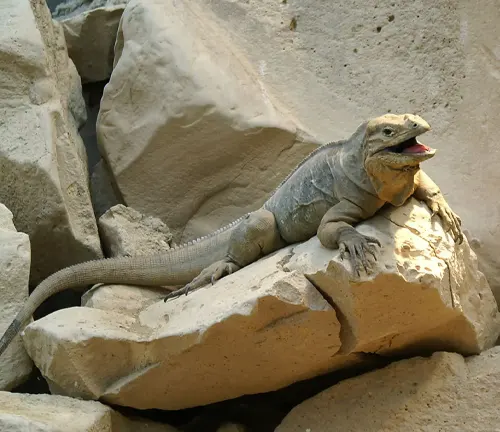

Feeding Habits
As herbivores, Rhinoceros iguanas have specialized feeding habits that revolve around consuming a variety of plant-based foods. They primarily feed on leaves, fruits, flowers, and other vegetation found within their habitat. Their diet may vary depending on factors such as availability and seasonal changes. Rhinoceros iguanas are known to forage during the day, using their keen sense of smell to locate food sources. They have specialized teeth adapted for chewing tough plant material, allowing them to efficiently extract nutrients from their food. Their feeding habits play a crucial role in maintaining the balance of their ecosystem and contributing to the dispersal of seeds within their habitat.
Reproduction
Mating Rituals
During the breeding season, which typically occurs during the dry season, Rhinoceros iguanas engage in elaborate mating rituals to attract potential mates. Male iguanas display their dominance and fitness through various behaviors, including head bobbing, push-ups, and showcasing their horns. These displays are intended to impress females and establish the male’s superiority over competing males. Males may also engage in physical combat with rival males to secure access to females for mating. Once a mate is chosen, mating occurs, leading to the fertilization of the female’s eggs.

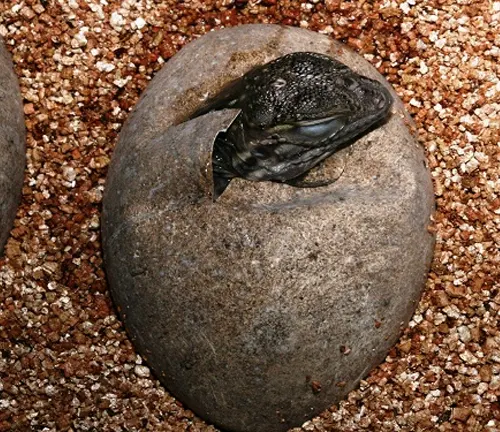
Nesting and Hatching
After mating, female Rhinoceros iguanas seek out suitable nesting sites to lay their eggs. They typically dig shallow nests in sandy or soil-rich areas, often in secluded locations such as under vegetation or within rocky outcrops. The female deposits a clutch of eggs, which can range from 2 to 20 eggs depending on factors such as age and environmental conditions. After laying the eggs, the female covers them with soil or sand to protect them from predators and the elements. The incubation period lasts around 70 to 100 days, during which the eggs are left unattended. Upon hatching, the newborn iguanas emerge from their eggs and must fend for themselves from the moment they hatch. They are independent and equipped with the instincts necessary to survive in their environment.
Conservation Status
Rhinoceros iguanas are classified as vulnerable by the International Union for Conservation of Nature (IUCN) due to various threats to their survival. One of the primary threats facing Rhinoceros iguanas is habitat loss and degradation caused by human activities such as deforestation, urbanization, and agricultural expansion. Destruction of their natural habitat reduces the availability of suitable nesting sites and food sources, leading to population declines.
Interaction with Humans
Captivity
While Rhinoceros iguanas are primarily wild animals, they are occasionally kept in captivity under controlled conditions. Captive Rhinoceros iguanas require specialized care and a suitable habitat that mimics their natural environment as closely as possible. This includes providing spacious enclosures with areas for basking, hiding, and climbing, as well as appropriate heating and lighting to meet their needs. Captive breeding programs play a crucial role in ensuring the genetic diversity and sustainability of Rhinoceros iguana populations in captivity. However, it’s essential to note that keeping Rhinoceros iguanas as pets should be approached responsibly, and potential owners should research their needs thoroughly before considering ownership.
Conservation Tourism

Conservation tourism initiatives offer opportunities for travelers to observe Rhinoceros iguanas in their natural habitat while supporting local conservation efforts. These eco-tourism ventures provide economic incentives for local communities to protect Rhinoceros iguana habitats and promote awareness about the importance of conservation. Visitors have the chance to learn about the challenges facing Rhinoceros iguanas and participate in activities such as guided tours, educational programs, and habitat restoration projects. Conservation tourism not only benefits Rhinoceros iguanas by contributing to their protection but also helps to support sustainable livelihoods for local communities dependent on tourism revenue.
Different Species
Cuban Rock Iguana
(Cyclura nubila)
Found primarily in Cuba, this species inhabits rocky terrain and is known for its robust build and dark coloration.
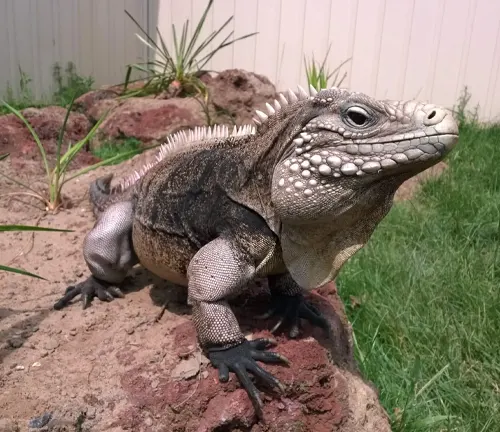
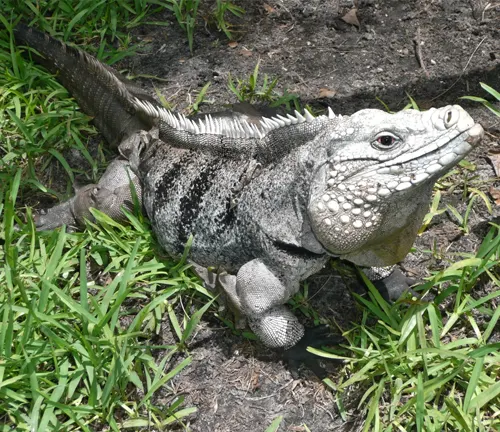
Cayman Brac Iguana
(Cyclura nubila caymanensis)
Endemic to the island of Cayman Brac in the Cayman Islands, this subspecies of Cuban Rock Iguana is critically endangered due to habitat loss and predation.
Cayman Blue Iguana
(Cyclura lewisi)
Also known as the Grand Cayman iguana, this species is found only on Grand Cayman Island in the Cayman Islands. It is one of the most endangered iguanas in the world, with conservation efforts focused on its protection and recovery.

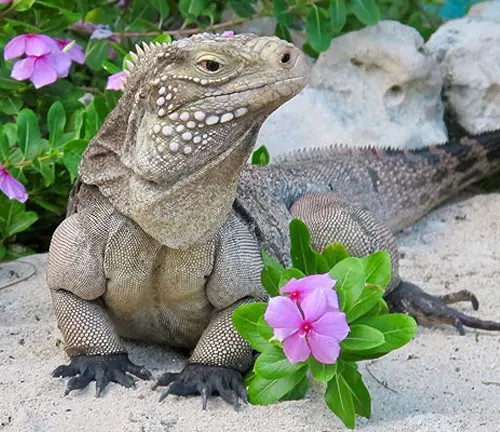
Sister Islands Iguana
(Cyclura cychlura)
Found on the Sister Isles of Little Cayman and Cayman Brac, this species is closely related to the Cuban Rock Iguana. It is characterized by its smaller size and lighter coloration.
Anegada Ground Iguana
(Cyclura pinguis)
Endemic to the island of Anegada in the British Virgin Islands, this species is critically endangered due to habitat loss, predation, and invasive species.
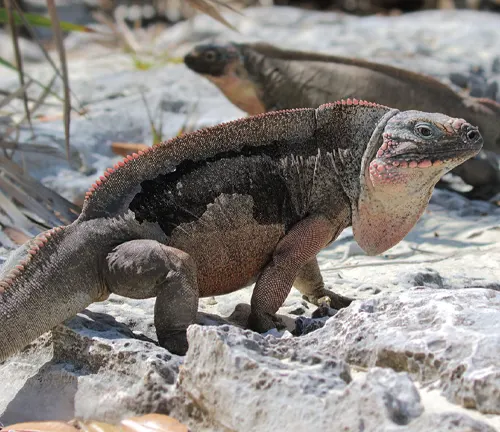
Frequently Asked Questions (FAQs)
- Where do Rhinoceros iguanas live in the wild?
Rhinoceros iguanas are native to the Caribbean islands of Hispaniola and Haiti, where they inhabit rocky, arid areas such as limestone outcrops, coastal scrublands, and dry forests. - How big do Rhinoceros iguanas get?
Rhinoceros iguanas can reach lengths of up to four feet, with males typically being larger and heavier than females. - Do Rhinoceros iguanas make good pets?
While some people may keep Rhinoceros iguanas as pets, they require specialized care and a suitable habitat. Potential owners should research their needs thoroughly before considering them as pets. - What kind of habitat do Rhinoceros iguanas need in captivity?
Captive Rhinoceros iguanas require spacious enclosures with areas for basking, hiding, and climbing. The enclosure should mimic their natural habitat as closely as possible, with proper heating and lighting. - How do Rhinoceros iguanas defend themselves from predators?
Rhinoceros iguanas have several defense mechanisms against predators, including camouflage, sharp claws, and strong jaws. They may also flee into crevices or use their tails as a whip-like defense. - What are the mating rituals of Rhinoceros iguanas?
During the breeding season, male Rhinoceros iguanas engage in elaborate courtship displays to attract females. These displays may include head bobbing, push-ups, and showcasing their horns. - How many eggs do Rhinoceros iguanas lay?
Female Rhinoceros iguanas typically lay clutches of eggs ranging from 2 to 20, depending on various factors such as age and environmental conditions. - Do Rhinoceros iguanas have any natural predators?
Natural predators of Rhinoceros iguanas include birds of prey, snakes, and mammals such as feral dogs and cats. Introduced predators pose significant threats to their survival in the wild. - Are Rhinoceros iguanas solitary animals?
While Rhinoceros iguanas are primarily solitary, they may occasionally be found in small groups, especially during the breeding season. They are territorial animals, marking their territories with scent glands. - What conservation efforts are in place to protect Rhinoceros iguanas?
Conservation efforts for Rhinoceros iguanas include habitat preservation, captive breeding programs, and efforts to combat illegal poaching and trade. Conservation organizations work to raise awareness and implement measures to ensure their survival.


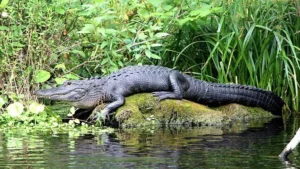
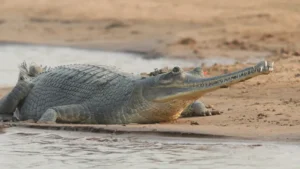
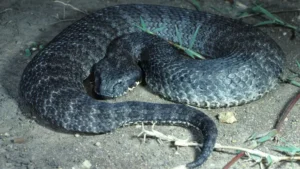
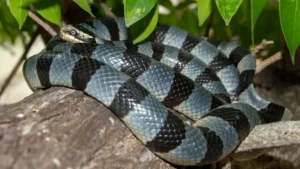
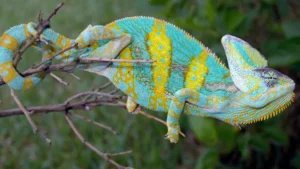

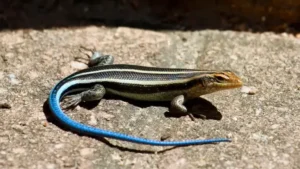
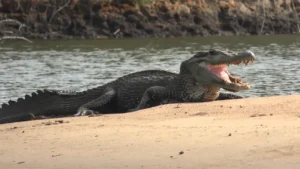
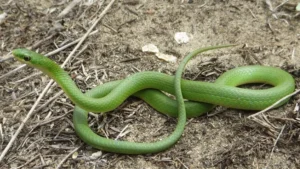
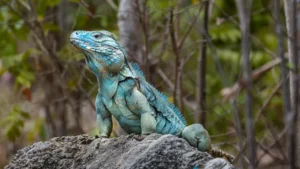
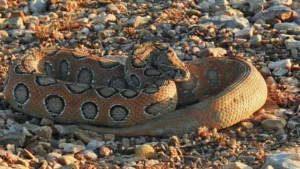

Leave your comment